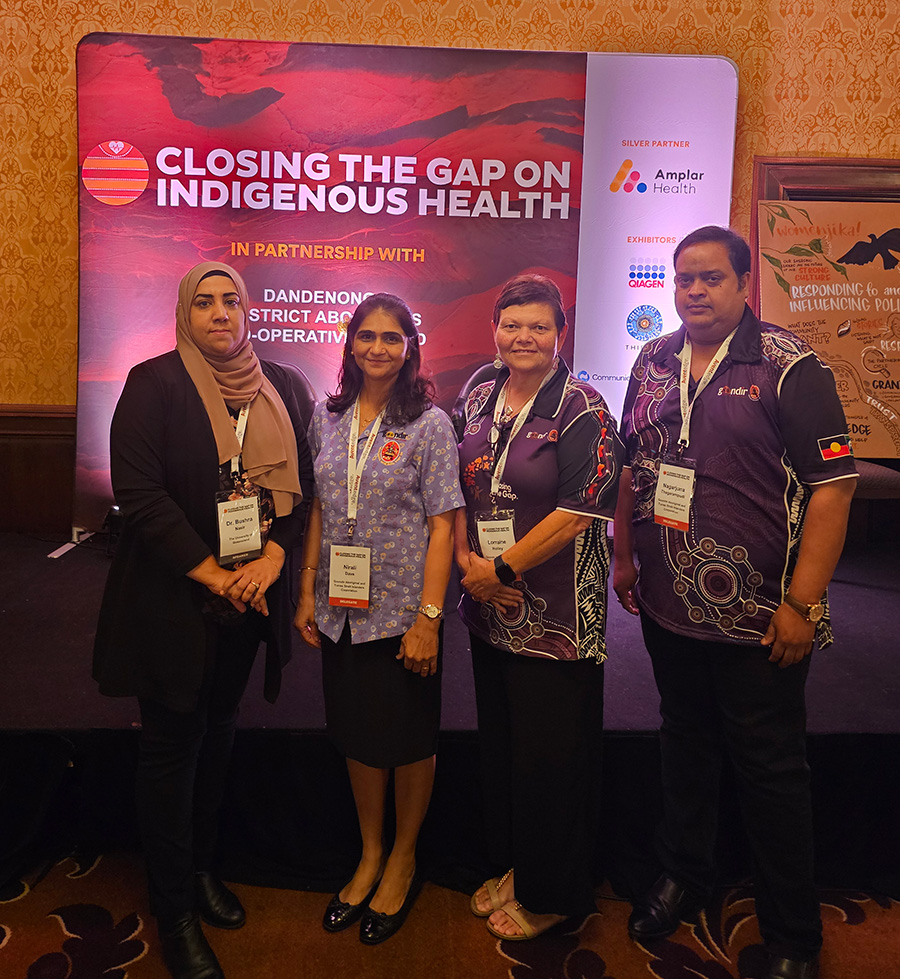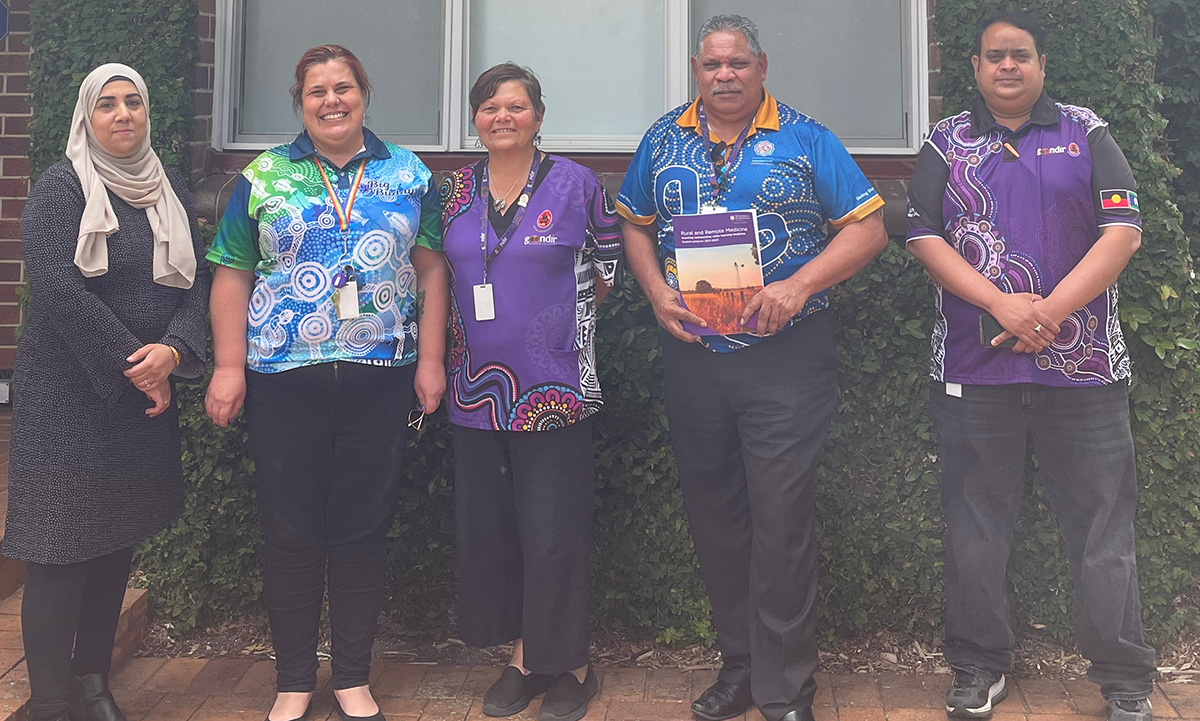An innovative digital primary health care delivery model for Aboriginal and Torres Strait Islanders
 Digital innovation technologies are creating a revolutionary impact on the way primary health care is provided for regional, rural, and remote communities, through a transformational model of care being co-designed by the Rural Clinical School (RCS) Research Group, Goondir Health Services (GHS, an Aboriginal Community Controlled Health Organisation) and the University of Southern Queensland (UniSQ).
Digital innovation technologies are creating a revolutionary impact on the way primary health care is provided for regional, rural, and remote communities, through a transformational model of care being co-designed by the Rural Clinical School (RCS) Research Group, Goondir Health Services (GHS, an Aboriginal Community Controlled Health Organisation) and the University of Southern Queensland (UniSQ).
The partnership, who were awarded funding through the Medical Research Future Fund (MRFF) in 2022, are in the process of co-developing The Innovative Digital Indigenous Primary Health Care Delivery Model (ID-INSPIRED) program.
Over the past 12 months, community and consumer consultations and engagement are progressing the co-design of ID-INSPIRED which will integrate Virtual Health Services and Point of Care Testing through a digital patient management platform for Aboriginal and Torres Strait Islanders. Currently Goondir Health Services provides virtual health services to its clients across a 72,000 sq km service area, and have been commissioned to roll out this service across other regions in Queensland.
RCS Research Group Research Fellow and Director of ID-INSPIRED, Dr Bushra Nasir says that improving healthcare access and outcomes for Aboriginal and Torres Strait Islander peoples experiencing chronic disease is the fundamental objective of this program.
“The collaborative project uses advancing digital technology that we hope will bridge many health-related and geographical barriers, which will significantly reduce the burden of chronic disease among patients living in rural and remote Queensland,” Dr Nasir said.

The partners involved in the ID-INSPIRED project are committed to developing a sustainable, cost-effective, and data-driven model of care that can be implemented by healthcare providers across rural and remote Australia. Research co-design and evaluation over the next four years of this program aims to show how this model can provide Indigenous Australians experiencing chronic disease with quality primary care, irrespective of where they live.
